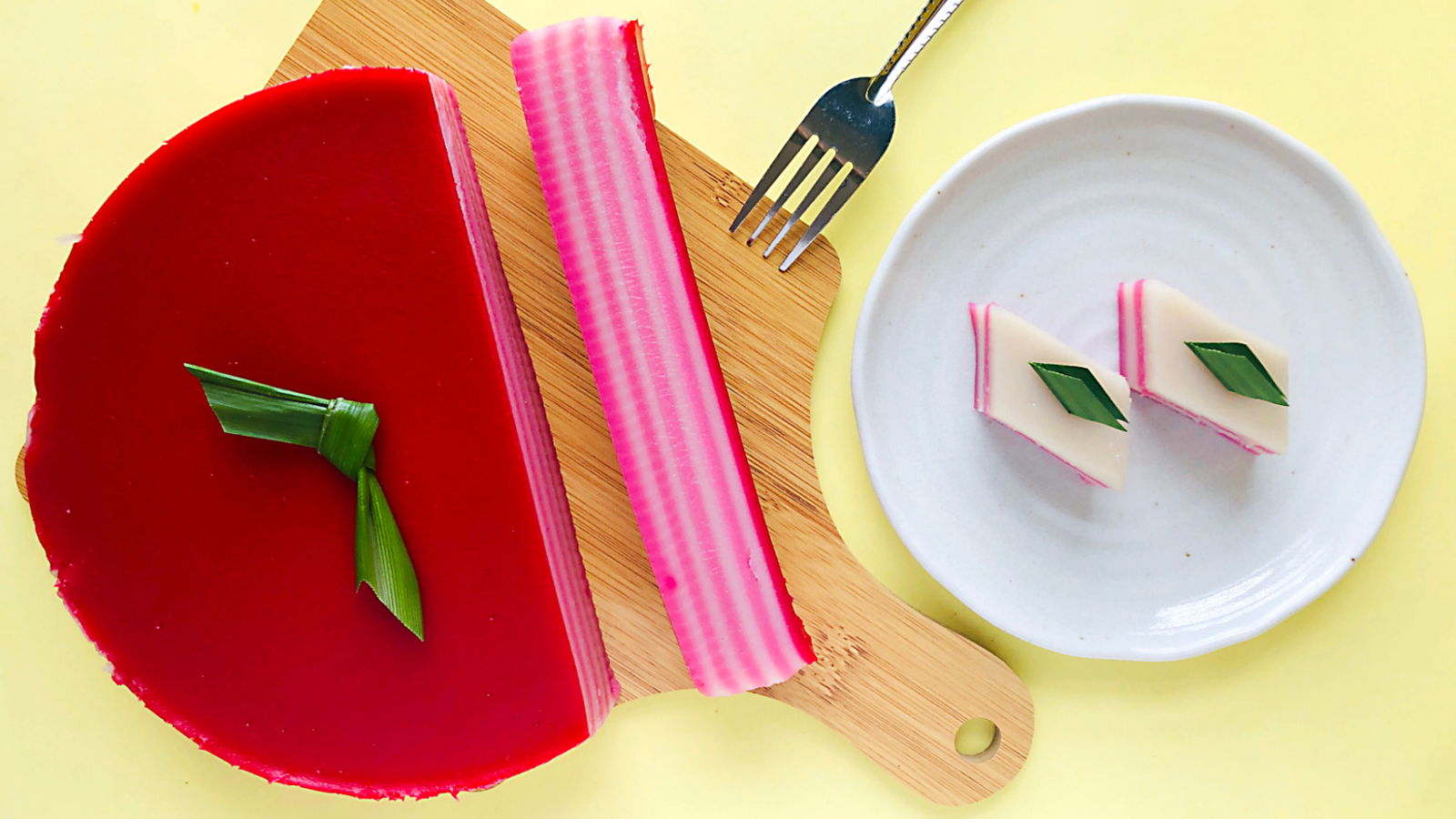Kueh lapis or also spelled as kuih lapis/kue lapis is a beautiful traditional steamed cake which originates from Indonesia. The term ‘lapis’ simply means layer in Indonesian and Malay referring to the construct of the kueh. Meanwhile, the word kueh/kuih/kue brings the same meaning, a traditional cake or snack. Each layer is steamed with care making it possible to peel the layers without much resistance. That is exactly how the locals love to enjoy this kueh!
How does kueh lapis taste like?
Many often compare its texture to pudding. While it may be soft and wobbly, every bite of the kueh has a firm and springy mouth feel. It has a rich flavour of coconut milk as that is one of the main ingredients of the recipe. The light sweetness makes it very easy to enjoy the snack without feeling guilty.
Using only wheat flour
The traditional recipe uses mainly rice flour but many recipes use only wheat flour in their version of Kueh Lapis. If you do not happen to have any rice flour or tapioca flour at home, simply substitute it with wheat flour on a 1:1 ratio.
Replacing tapioca flour
Tapioca flour or starch can be substituted with corn starch or mung bean flour. However, I find the texture is not as fine as when tapioca flour is used. If you decide to use one of the two substitutes, do sieve the mixture in Step 2.
Variety of flavours and colours
This recipe uses artificial rose colouring which is most commonly found. Some food vendors add rose flavouring for the fragrance. You may also find the kueh with several colours for a rainbow-like appearance.
For natural colours, I would recommend blending pandan leaves with coconut milk for a delicate green colour. Otherwise, butterfly pea flower is another popular ingredient to create a gorgeous hue of blue.
Why the layer does not harden?
This happens when the heat is too low. It could also be that the batter is not mixed thoroughly each time before pouring it in as the flour tends to settle at the bottom after being left sitting for a while.
Why is the kueh lapis wrinkly and not smooth?
The steps to making kueh lapis is very simple but the techniques can be rather tricky. When steaming, ensure that the steamer (wok or pan) has enough space to allow the heat to circulate and cook the batter. You should also not steam it at high heat.
Additionally, there is no need to continously check on the kueh or the water droplets may fall onto the semi-cooked batter. This will create spots on the layers. To avoid water droplets from falling onto the layers, wrap the lid with a kitchen towel to absorb condensation.
Why can‘t it be removed easily?
It can be tricky to remove this traditional cake from the mould. Line your mould with oil or if you can get the food grade plastic lining, it will be easier to remove the kueh lapis. Otherwise, the kueh will look unpleasant and uneven at the bottom.
Making smooth bite-sized cuts
Cutting kueh lapis is unlike cutting a cake. It is very important to allow the cake to fully cool down before cutting. Due to its stickiness, there will be bits clinging onto the knife when slicing it. Therefore, grease the knife with a bit of oil to prevent this from happening. A plastic knife is another alternative as the crumbs will not stick to it.
How long can kueh lapis be kept fresh?
It can be kept fresh for one day at room temperature. Since it contains coconut milk, it is best to store it in the refrigerator for a shelf life up to 1 week. However, it must be kept in an air tight container or the outer layers will dry up.
Can it be kept frozen?
If you plan to have kueh lapis for later consumption, you may keep it frozen for up to 1 month. To get the soft and bouncy texture again, steam it before serving.

